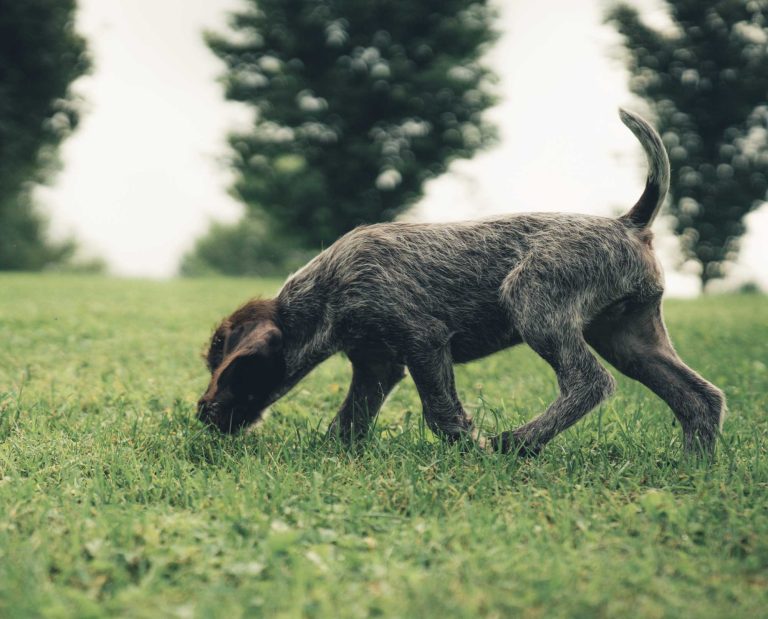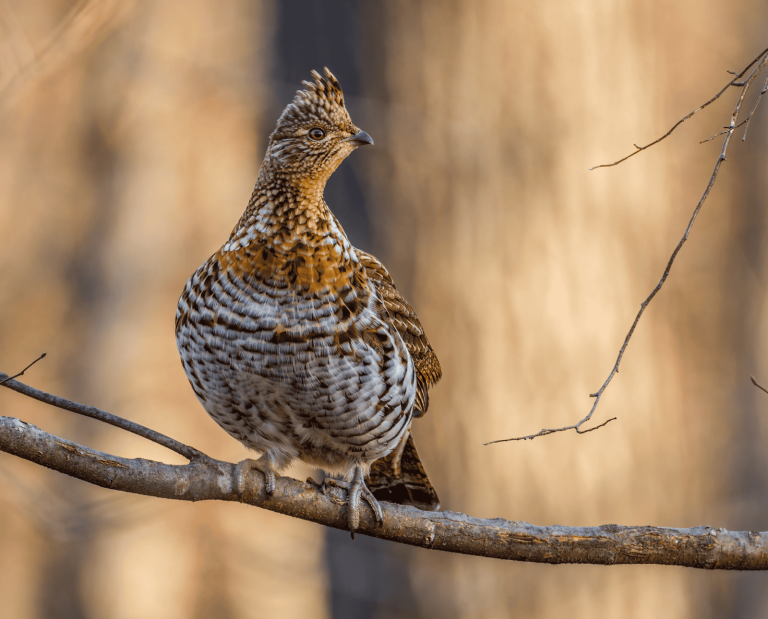Browning Superposed: A Shotgun Overview

A hunter finds a connection to hunting tradition through the history of a classic over-under shotgun
No one in the family into which I was born would identify as a hunter or participate in these pursuits. My dad has an extensive gun collection, but his collection consists of exactly zero hunting rifles or shotguns; they are all military pieces from various eras and numerous countries. It’s a beautiful collection, and incredibly interesting, but has little connection to a hunting heritage. That’s the reality for me—I don’t have a hunting legacy to which I am naturally connected, apart from the one into which I married. On a personal level, I think traditions deserve questioning, but not before understanding is sought. Hunting, by nature and merit, is no different. I feel a personal responsibility to connect myself to the history and tradition in and around these pursuits.
Hunting as a tradition, I think we would all agree, is more than the firearms we carry. It is the changing seasons and the quarry we pursue. The transition from summer to fall brings with it a reprieve from the summer’s heat and a calling back to perhaps the most cherished time of year. Seasons have come and gone timelessly, but for generations, people have been donning their favorite coat and grabbing their preferred gun. Fall is known by the deep reds and yellows of changing leaves and the icy snort of a whitetail against taut nerves. It is the frost underfoot and the thunder of wings in thick cover. It is the sounds of hollering through the woods, the crunch of leaves underfoot, and a bear breaking from a thicket. It is the baying of hounds, the crash of a Springer through brush, and a Setter locking into a staunch point. Those experiences are shared and echo across generations. The legends of hunting dogs are told around fires, over drinks, and on tailgates. Successes and failures find themselves in fine company. They are shared as encouragement and as reminders of the hunter’s ethic—that what we do when no one is watching communicates our character and respect for the animals we pursue and the land on which they are pursued.
Those of us who didn’t grow up in these activities may struggle to connect to that legacy and the rich history in which these experiences are rooted. For at least some of us, I would speculate, we have no tangible connection to Lynn Bogue Hunt’s paintings of woods thick with grouse and woodcock or the black-and-white photos from deer camps with 20 deer displayed with an equal number of successful hunters. The oral tradition around which hunting is so completely enveloped certainly fosters that connection, but artifacts work powerfully on the human psyche. The lack of many of these familial connections leave us room to create new narratives, with the artifacts available to us, while honoring many of the narratives around us.
For me, that connection took the form of a 20-gauge Browning Superposed manufactured in 1954.
The Rise of the Browning Superposed
The Superposed was the last gun designed by John Browning, according to Ned Schwing’s opus, which is aptly titled The Browning Superposed: John M. Browning’s Last Legacy. Browning was an engineering genius, with many of his designs still in production today. His vision for this particular gun was for it to be a high quality but affordable shotgun, especially considering the price of European over-unders at the time. Browning’s design took into account weaknesses in other designs in this configuration, specifically looseness in the breech. He reinforced the hinge mechanism in order to ensure tightness for the long haul. Browning went to Fabrique Nationale (FN) in Liege, Belgium with his design, after having great success with the Auto-5 earlier. Unfortunately, he wouldn’t get to see the success of the Superposed; John Browning died in 1926. The design itself was finished by other members of the family, including refinements to both the ejector system and a few different trigger designs. The first Superposed wouldn’t be sold until 1931.
The pre-World War II Superposed was available in 12-gauge only. During the 1930’s, though, the company made clear the scope of options that were available for custom orders, for which quotes could be supplied upon request. One could order a specific trigger setup, chambered to shoot 3-inch shotshells, custom engraving or cases, or most anything the hunter could request.
Regardless of the decade, for me, the Superposed is a gun that hearkens back to a post-war society that sought, once again, to get into the woods, to escape the trouble of the world and connect with something which, in so many ways, was simpler than the preceding decade(s). According to Schwing, the FN plant, including its workforce, was all but destroyed in World War II. The following decade was one of rebuilding and revitalization. The 20-gauge version of the Superposed wasn’t released until after World War II, being first available in the 1949 catalog. It wouldn’t be until the following year, however, that both the 12- and 20-gauge models were offered in the complete range of grades (I-V). While both models could be ordered with matted or ventilated ribs, the ventilated rib option came with the most options. Barrels ranged from 26.5” to 30” for the 12-gauge and 26.5” or 28” for the 20-gauge; a handful of trigger options were available as well.
The 1950s saw the introduction of various sub-models of the gun. Hunting models (Trap- and Skeet-specific models also became available), in particular, had a Lightning version that boasted some weight savings and the 12-gauge featured a Magnum option that was chambered for 3-inch shells. Both 12- and 20-gauge guns had similar barrel/rib configurations as those previously mentioned. The guns boasted fixed chokes, which are identified by stamped stars and dashes on the sides of the barrels, just down from the ejectors. This era also saw trigger options limited to one: the single selective trigger, a design perfected by John’s son, Val. Interestingly, every Superposed through this era was hand-engraved.
Wanting to connect to my newfound gun’s legacy, I called Browning and asked if they could provide any additional information on this particular gun. They transferred me to their historical department, where they took the serial number and my information and told me they would mail me a letter with the findings. Their historian dug through the Browning archives and mailed a letter indicating the gun’s all-original condition and its original purchase price and location. Unfortunately, the Cincinnati sporting goods store in which it was sold was shuttered in 1997. Their records, I can only assume, have been lost to time.
The Eventual Decline of the Superposed
Browning went public in the 1960s and had begun acquiring other sporting goods companies. While these acquisitions had varying degrees of profitability, they served to grow the company substantially. On the FN front, however, rising labor costs and high demand for such a specialized workforce saw the Superposed begin to miss the mark in affordability. Due to these initial challenges, and the belief that they would only increase in severity, Browning had begun working in the mid-60s to open a plant in Japan in an effort to offset the seemingly perpetual rising costs of manufacturing the Superposed in Belgium and the resulting inventory shortages experienced in the United States. The 1960s still, however, saw the full introduction of a 28 gauge and .410 model and a Lightning version of the Trap model. Sales increased across the board for the Superposed during the 1960s, but labor costs continued to rise, even as design features were modified to cut costs while preserving quality.
The early 1970s saw the first Browning Citori, produced at the plant in Miroku, Japan, hit the market. Between 1970 and 1976, the cost of a Belgian-made Superposed more than doubled. The gun noted for both quality and affordability ultimately priced itself out of the market. By the 1980s the writing was on the wall—the era of the Belgian-made Superposed as a perennial moneymaker was over (though it’s important to note that some models were/are still available in European markets via the Browning Custom Shop). FN bought Browning in 1977, another testament to changing times and markets.
The Superposed in Today’s Market
One can still order a Superposed through The John M. Browning Collection in Belgium. The guns are, ironically, bespoke like the European over-unders of yore for which Browning had originally sought to offer a replacement (e.g., a B25, the original Superposed, Diana Grade will cost you around $30,000). Current Citori models come in 12, 20, 28, and .410. Beyond that, the options are legion with barrels ranging from 24”-32”, depending on other aspects of the configuration, of course, with models running the gamut of function (e.g., trap, hunting, etc.) and grade.
Used Superposed guns are regularly available on the major online gun marketplaces. Their prices vary based on the year of manufacture, grade, and gauge, but typically start at around $1,000 for the most common varieties in the condition typical for their age. The Superposed was designed to be workhorse, and it certainly is, but that doesn’t prevent the mechanical wear that comes from using something 10,000 times. Breakage happens, from perhaps expected sources (e.g., ejectors breaking) to less frequent issues, and there are places that specialize in the repairing Belgian-made Brownings.
I like to think that my gun was part of many great stories in the previous 65 years or so. I had (and still have) a deep desire to connect my own hunting stories to the stories of the gun’s past, to find someone who had carried it afield and to hear its place in those tales. And while that hasn’t come to pass, that doesn’t tarnish my connection with the gun and its legacy. While there are gaps in my own knowledge of the gun’s history, that doesn’t erase the previous 65 years, though I’m left to speculate about their content. The Browning high gloss finish is sometimes maligned, but to me, it carries in it the scratches of big fields and heavy cover. The bluing along the underside of the receiver shows telltale sign of carry wear with the bright steel shining through. The bruising on the forearm bears witness to hard hunts in good country. Which covers, country, and fields? I cannot say, but field wear leaves an indelible mark. This Superposed has become an essential part of the stories of my own life. It swings sweetly and has the attractiveness of an appropriately-worn field gun, a shooter through and through.
Hunting is a collection of shared stories. The tools of our pursuit, in this case shotguns, alongside our friends and family and dogs, are essential characters in those stories. These old guns can serve as connections to a legacy that might not otherwise be available. While I might not know any details beyond those of the era in which my own was created and the story of the man that designed it and the company that produced it, it connects me to a bygone era of hunting. That legacy is a foundation on which my own experiences are set as I, we, collectively create new hunting legacies to be shared and passed on.
*Superposed technical information and history from The Browning Superposed: John M. Browning’s Last Legacy by Ned Schwing, Krause Publications, Iola, WI (1996)








